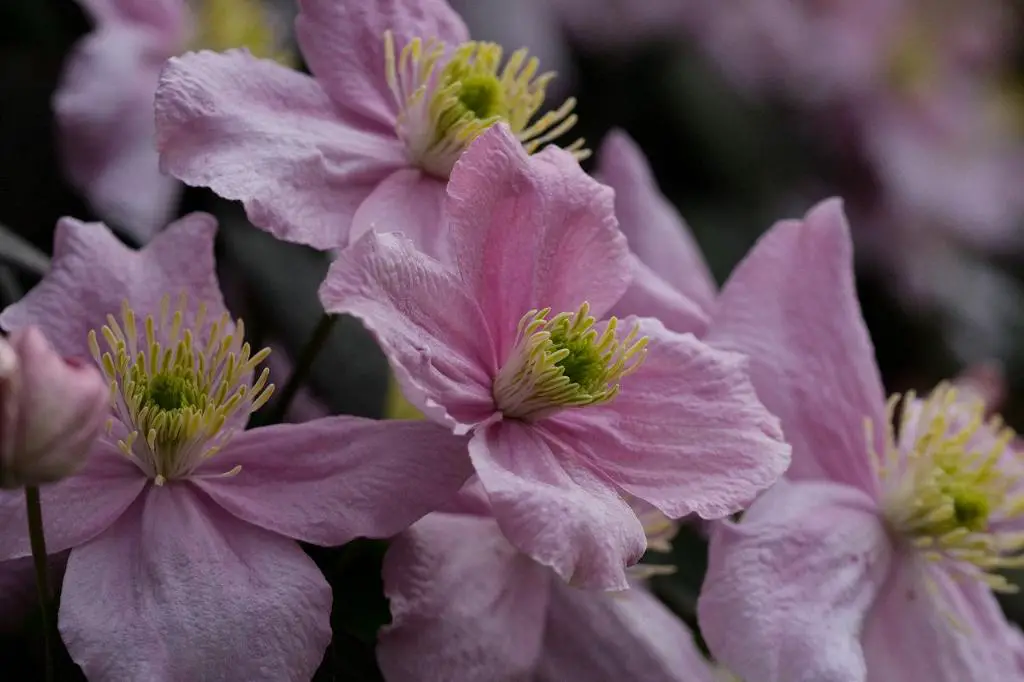When it comes to the question of whether you should cut back clematis, the answer is a resounding yes. Regular pruning is essential for clematis plants as it encourages strong growth and flowering, ultimately keeping the growth in check. Without proper pruning, clematis can quickly turn into a tangled mess of stems with a bare base and flowers that end up well above eye level.
The Benefits of Pruning Clematis
Pruning clematis not only helps maintain the aesthetics of the plant but also plays a crucial role in ensuring its overall health and vigor. By cutting back clematis, you are stimulating new growth and encouraging the plant to produce more flowers. Additionally, pruning allows you to shape the plant and prevent it from becoming overcrowded or unruly.
When to Prune Clematis
The timing of pruning clematis depends on the specific type of clematis you have in your garden. Generally, there are three main groups of clematis categorized by their flowering times, and each group requires slightly different pruning techniques. It’s important to familiarize yourself with the specific pruning needs of your clematis variety to ensure you prune it at the right time for optimal results.
How to Prune Clematis
Pruning techniques for clematis can vary based on the plant’s flowering group. For Group 1 clematis, which bloom early in the year, minimal pruning is required. Group 2 clematis, which bloom in early summer on the previous year’s growth, benefit from light pruning to shape the plant. Group 3 clematis, which bloom in late summer on new growth, should be pruned back significantly in late winter or early spring to encourage new growth.
Common Pruning Mistakes to Avoid
While pruning is beneficial for clematis, it’s essential to avoid common mistakes that can harm the plant. One common error is pruning at the wrong time, which can lead to reduced flowering or damage to the plant. Additionally, improper pruning techniques, such as cutting back too much or too little, can impact the plant’s growth and overall health.
Tools for Pruning Clematis
Having the right tools for pruning clematis is essential to ensure clean cuts and prevent damage to the plant. Sharp secateurs are a must-have for precise cuts, especially when dealing with woody stems. Additionally, a pair of pruning gloves can protect your hands from thorns and help you get a better grip on the plant while pruning.
Considering Different Clematis Varieties
It’s important to consider the specific needs and characteristics of the clematis variety you have in your garden when deciding on a pruning strategy. Some clematis varieties may require more aggressive pruning to control their growth, while others may do well with minimal pruning. Understanding the growth habits of your clematis plant is key to ensuring successful pruning.
Pruning for Optimal Flowering
One of the primary reasons to prune clematis is to promote optimal flowering. By cutting back the plant at the right time and in the right way, you can encourage the production of more flowers and ensure that they are displayed at an eye-catching level. Proper pruning can help you achieve a stunning floral display in your garden.
Pruning for Plant Health
Pruning has numerous health benefits for clematis plants, including improved air circulation, reduced risk of disease, and the removal of dead or damaged growth. By keeping your clematis well-pruned, you are creating a healthier growing environment that can contribute to the overall longevity and vitality of the plant.
Clematis Pruning Tips
When it comes to pruning clematis, there are a few key tips to keep in mind. Always use clean, sharp tools to make precise cuts and avoid tearing the plant tissue. Familiarize yourself with the specific pruning needs of your clematis variety to ensure you prune it at the appropriate time. Lastly, don’t be afraid to experiment with different pruning techniques to find what works best for your plant.

Final Thoughts
In conclusion, the question of whether you should cut back clematis is a resounding yes. Pruning is essential for maintaining the health, vigor, and aesthetics of clematis plants. By understanding the specific pruning needs of your clematis variety and employing proper pruning techniques, you can ensure that your clematis thrives and produces beautiful flowers year after year.
